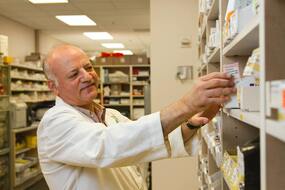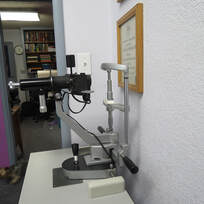
What methods do doctors use to fit contact lenses?
At first glance the first four methods of the five below seem strange, but they do exist.
At first glance the first four methods of the five below seem strange, but they do exist.

1. Lazy & Irresponsible The doctor simply writes your eyeglass prescription on a prescription pad and tells you to order any contact lenses to match.

2. Lazy but responsible. The doctor writes your eyeglasses prescription and tells you to take it to someone who fits contact lenses.

3. Minimal effort with some responsibility. The doctor hands you contact lenses from his stock based only from your eyeglasses prescription and sends you out the door.

4. Some effort with responsibility. This is the same as above but the doctor follows up in a week to be sure the lenses are satisfactory after wear.

5. Effort and responsibility: After your basic examination, the surface of your eye is measured with a keratometer, and your prescription and fit is determined through your immediate wear of diagnostic lenses. You are taught how to handle and care for the lenses, given a wearing schedule, and are seen in a week to determine the lenses’ success. The next visit determines if they were successful. If not, new diagnostic lenses are given with a weekly follow-up. This continues until successful wear.
|
How do we fit contact lenses? We use the 5th method with extra caution.
We first determine if contact lens wear is advisable for you by reviewing your entire vision system and your habits, vocation, and hobbies. Some hobbies and jobs preclude contact lenses(field work and jobs where hands are dirty and greasy) while others are advantageous for contact lenses (sports and law enforcement). |
|

We always discuss the MOST IMPORTANT reason to wear contact lenses Yes, it is cosmetics! Since they require far more care and responsibility than glasses, you must be motivated to wear them.
|
Contact lenses are available for all vision conditions, but some make contact lens fitting difficult (high amounts of farsightedness and astigmatism) and some are better treated with contact lenses (eyes with differing powers [anisometropia] and extremely strong prescriptions). You are then given an estimate of the cost and our fee policies.
|
|
|
|
Secondly, we emphasize that contact lenses take more time and responsibility (cleanliness, storage, extra solutions, and over-wearing) than glasses and that cosmetics are the main driving force for wear (mentioned above).
|

Thirdly with your approval, after considering your vision condition, we measure the surface of your eye with a keratometer to determine the curvature of the contact lenses and long term wear of the outer surface of your eye(cornea).
|
|
Fourth we select a diagnostic lens to teach the insertion removal and care of your lenses. Our assistants assist you to place the lenses on your eye and the doctor evaluates the fit and power of the lenses. If the diagnostic lenses seem correct, we follow up in a week to be sure the lenses endure long time wear. You leave with a wearing schedule and necessary supplies. If not, you take the diagnostic lenses home with supplies only to practice insertion and removal. At the same time we order new diagnostic lenses from our laboratory better designed for your wear. At that moment your entire bill is paid. The above process takes place until final fit is concluded.
|

After three follow-up visits and your care is not complete, the doctor discusses your chance for success. If you wish to quit, half your fee is applied toward future care for you or your family. If not, we are obliged to continue the process until successful fit. Your only change in fee would be the difference in cost if a more expensive lens is needed. There is no refund from that point. Normally, if fit goes beyond three months an additional $50.00 fitting fee is applied. However with current supply chain delays that has been suspended.